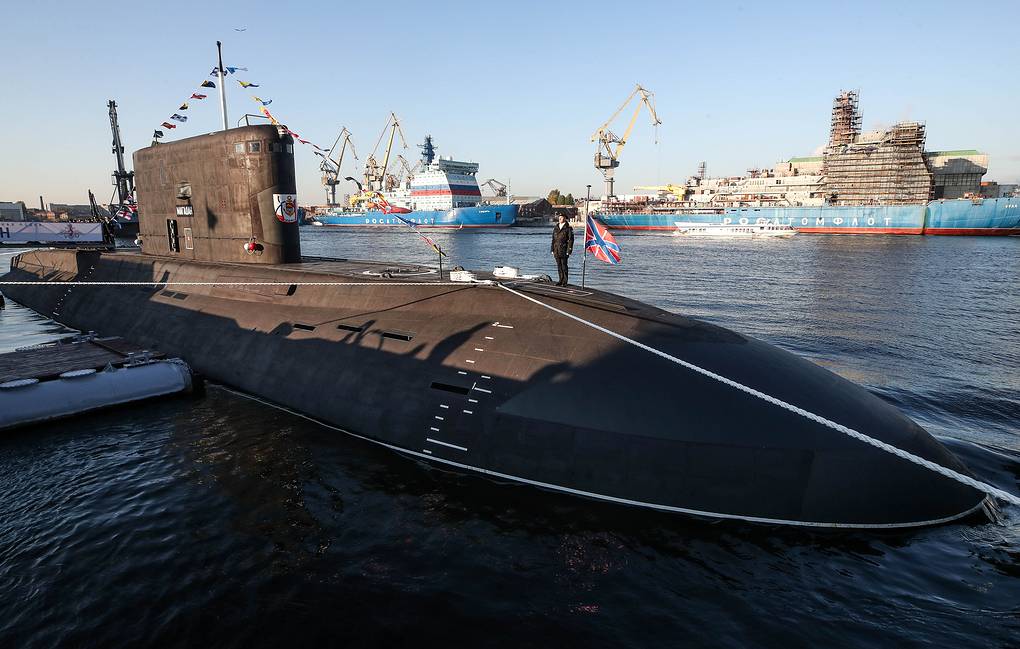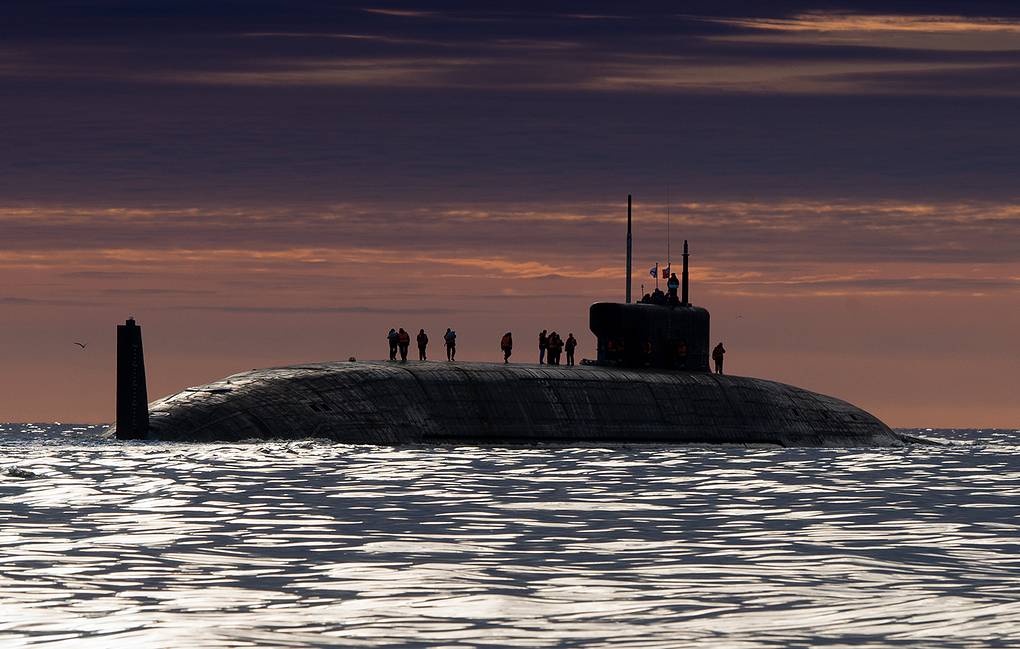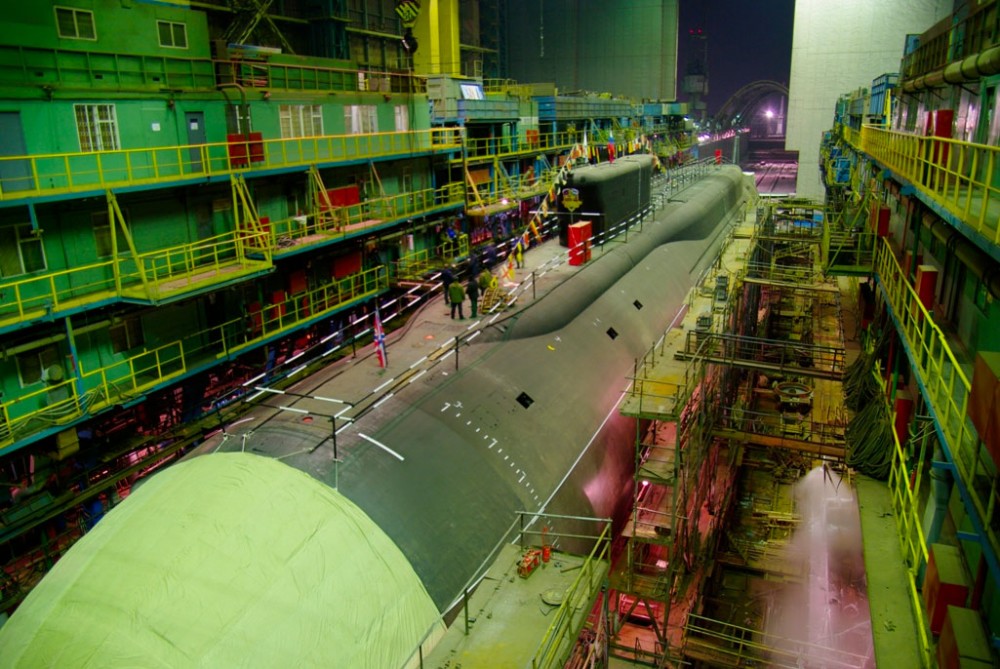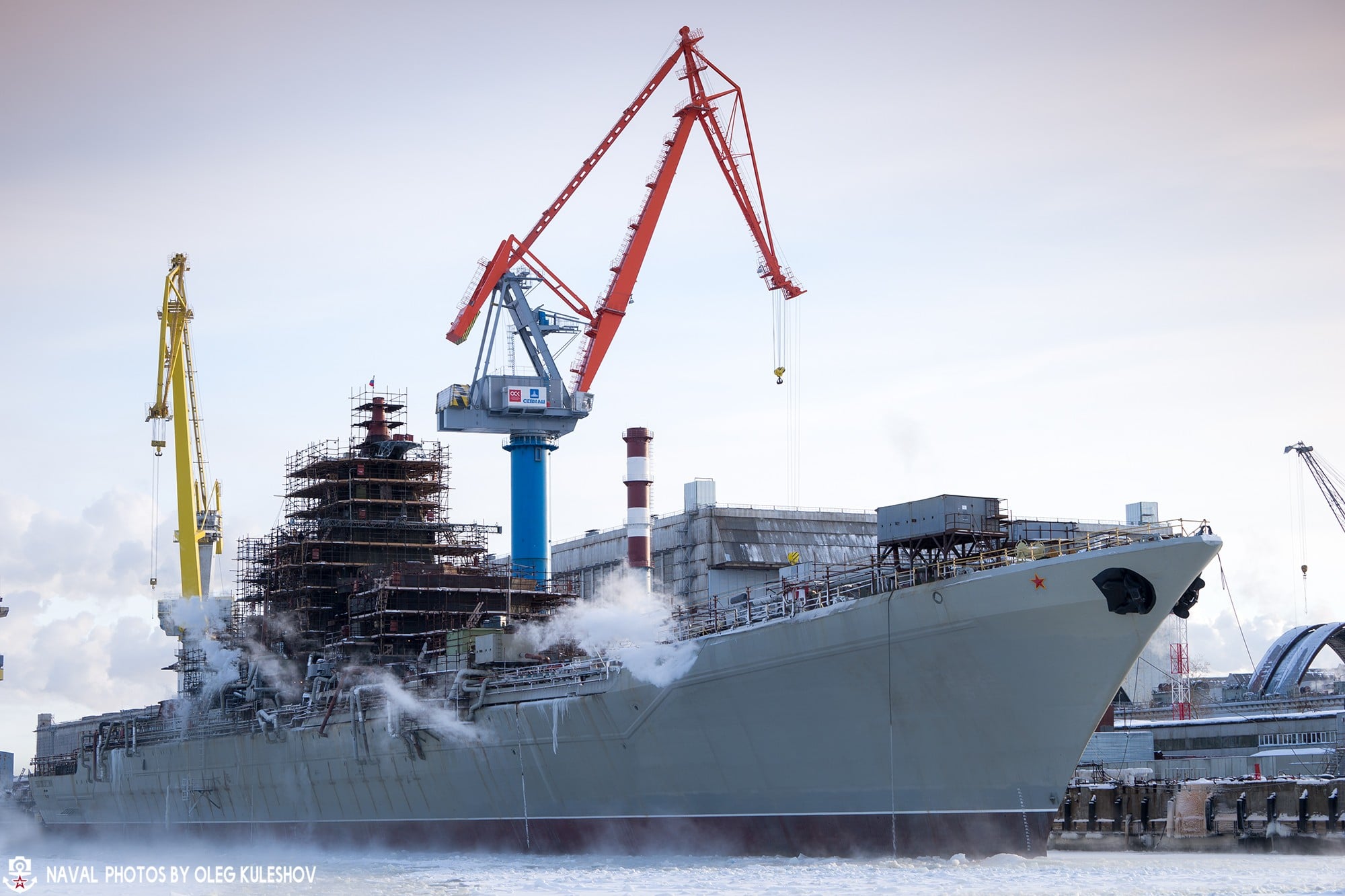Russian Navy’s Modernization Program with New Nuclear Submarines

In 2021, major world powers have accelerated their naval modernization programs through the latest equipment acquisitions and upgradation, especially in the realm of nuclear-powered vessels and submarines. Although the AUKUS deal made the most headlines in terms of naval development in 2021, Russia has significantly paced efforts to upgrade its naval assets and increase the number of nuclear-powered submarines.
2021 became a record year for Russia’s shipyard and shipbuilding companies. By the last quarter of the year, Russia’s largest shipbuilding company, Sevmash, provided the Russian Navy with two modern nuclear-powered and one conventional diesel-electric submarine. The news about this acquisition was reported by Russian Deputy Defense Minister Alexey Krivoruchko.
The three submarines are Project 885M nuclear-powered submarine Novosibirsk, Project 955A nuclear-powered strategic submarine Knyaz Oleg and Project 636.3 diesel-electric submarine Magadan.
According to Russia’s Deputy Defense Minister Krivoruchko, “The fourth-generation nuclear-powered strategic underwater cruiser Knyaz Oleg that has joined the seaborne nuclear deterrence forces is outfitted with advanced missile armaments that are capable of delivering missile strikes against enemy strategically vital military and industrial facilities.”
Apart from these three submarines, the Russian navy also received two new combatant boats, a Monolith-BR coastal radar, and missile system as well as several new and overhauled naval aircraft in the last quarter of 2021.
 Russian navy Project 636.3 Kilo-Class Magadan diesel-electric attack submarine (Image Credit: Alexander Demianchuk/TASS)
Russian navy Project 636.3 Kilo-Class Magadan diesel-electric attack submarine (Image Credit: Alexander Demianchuk/TASS)
Russia’s Nuclear-Powered Submarines
The latest nuclear-powered submarines added to the Russian naval fleet are the fourth generation of Russia’s nuclear-powered submarines that are capable of carrying underwater Kalibr cruise missiles, anti-ship missiles as well as Tsirkon hypersonic weapons systems.
The submarines are also equipped with advanced communication and sonar systems. Further details about the two fourth-generation nuclear-powered submarines are as follows:
Project 885M Yasen-class Novosibirsk Submarine
Novosibirsk is the third of the Yasen-class nuclear-powered submarine, also referred to as Graney-class submarines. The Yasen-class submarines are designed by Malakhit Marine Engineering Bureau and built by the Sevmash shipbuilding company for the Russian Navy. This class of submarines shares a lot of design elements with the Soviet-era’s Akula-class and Alfa-class nuclear-powered submarines.
Project 885M Novosibirsk is approximately 140 meters long and 13 meters wide at its beam. The third of the Yasen-class submarine Novosibirsk was laid down in 2013 and was delivered in December 2021. The submarine was commissioned to the Pacific fleet on December 21, 2021, becoming the first of the Yasen-class submarine to be commissioned at the Pacific Fleet of the Russian Navy.
Yasen-class nuclear-powered submarines can submerge as deep as 580 meters underwater while cruising at a speed of 40 mph. The submarine is equipped is compatible with Onik cruise missile and Kalibr anti-ship, anti-submarine attack cruise missiles. Apart from cruise missile capability, Yasen-class submarines are also equipped with Torpedo tubes and Vertical Launch Systems (VLS) for ballistic missile attacks.
 Project 955A nuclear-powered submarine Knyaz Oleg (Image Credit: Oleg Kuleshov/TASS)
Project 955A nuclear-powered submarine Knyaz Oleg (Image Credit: Oleg Kuleshov/TASS)
Project 955A Borei-class Knyaz Oleg Submarine
Knyaz Oleg is the fifth of Borei-class nuclear-powered submarines that was laid down in July 2012 and commissioned to the Russian navy on December 21, 2021, along with the Novosibirsk submarine. Knyaz Oleg was commissioned into the Northern Fleet of the Russian Navy.
Project 955A for Borei-class submarines was initiated to replace the Soviet-era Delta III, Delta IV, and Typhoon class submarine from the Russian Naval Fleet. Borei-class submarines are designed to be smaller in size and more compact as compared to the predecessor Typhoon-class submarine which provides the submarine with higher mobility and faster speeds.
Although the initial design process for Borei-class submarine was started in the mid-1980s, several changes were made in the design elements to accommodate the parallel development of Submarine Launched Ballistic Missiles (SLBM). After several trials and design approvals by Rubin Design Bureau, the first for the Borei-class nuclear-powered submarine was delivered in 2008 followed by five more of the same class submarines and seven more to come, making a total of 12 Borei-class submarines.
The 170 meters long and 13.5 meters wide Knyaz Oleg can accommodate a crew of 107 personnel. The submarine is powered by an OK-650V Nuclear Reactor and AEU Steam turbine, which provides it with an endurance range of more than 1 year (due to the food and supplies, not the fuel. Nuclear-powered submarines have nearly unlimited endurance because nuclear reactor does not need refueling for up to 25 years). Knyaz Oleg can cruise at speeds of 38 mph at the surface, and it can achieve speeds up to 17 mph underwater. It is also equipped with RSM-56 Bulava SLBM, 6 MIRVed warheads as well as 533mm torpedo tubes.
In response to the success of the compact submarine of Project 955A Borei-class, the Rubin Design Bureau launched Project 955B Borei-B-class submarine program in 2018 which is expected to upgrade the water jet propulsion system in order to improve the hull and enhance the noise reduction technology.
 A Borei-A class submarine before launching on water. (Image Credit: Sevmash)
A Borei-A class submarine before launching on water. (Image Credit: Sevmash)
Russia’s Naval Modernization Program
The Russian Navy is actively working to upgrade, replace and revive its Soviet-era naval equipment as a part of its decades-long naval modernization program. Two of Russia’s biggest shipyards are busier than ever. The Severodvinsk shipyard has been designated to work on new projects under Sevmash, while the Zvezdochka shipyard has been designated to work on repairing and upgrading the old submarines and warships.
One of the biggest ongoing restoration projects at Zvezdochka shipyard is the restoration and upgradation of the Soviet Navy’s nuclear battlecruiser Admiral Nakhimov. The ship was originally commissioned to the Soviet Navy in 1988, however, it was barely deployed to the sea and spent most of its time docked at the Severodvinsk shipyard. The ship is now undergoing some major repairs and upgradation to be commissioned back to the Russian Navy in near future.
Apart from having a large fleet of diesel-electric powered submarines ready to be commissioned, the following 13 nuclear-powered submarines are being constructed at the Severodvinsk shipyard to be commissioned into the Russian Navy by 2027.
Yasen-class
1. Krasnoyarsk
2. Arkhangelsk
3. Perm
4. Voronezh
5. Vladivostok
Borei-A class
6. Generalissimo Suvorov
7. Imperator Aleksandr III
8. Knyaz Pozharskiy
9. Dmitry Donskoy
10. Knyaz Potyomkin
Special Purpose Nuclear Powered Submarine
11. Belgorod
12. Khabarovsk
13. Ulyanovsk
 Russia's nuclear battle cruiser Admiral Nakhimov, originally commissioned into the Soviet Navy in 1988, was rarely deployed to sea. The warship has been docked at Sevmash in Severodvinsk since 1999, now undergoing repair and upgrades. (Image Credit: Oleg Kuleshov)
Russia's nuclear battle cruiser Admiral Nakhimov, originally commissioned into the Soviet Navy in 1988, was rarely deployed to sea. The warship has been docked at Sevmash in Severodvinsk since 1999, now undergoing repair and upgrades. (Image Credit: Oleg Kuleshov)
Although there is not much information released about the Special Purpose Nuclear Powered Submarine by the Russian authorities so far, according to some reports, Belgorod is set to become the world’s longest submarine that would carry Poseidon nuclear-powered and nuclear-armed drones, and it is likely to be deployed in Russian Navy’s Pacific Fleet in the near future.
With the fourth generation of Russia’s nuclear-powered submarines being under construction process, the fifth generation is also being designed and referred to as Husky-class submarines, however, so far, no design or construction contracts have been given out for the fifth-generation nuclear-powered submarine projects.
ALSO READ:
Regions
Issues

















 Russia-India S-400 Air Defense System Deal
Russia-India S-400 Air Defense System Deal Russia's Anti-satellite Missile test
Russia's Anti-satellite Missile test







